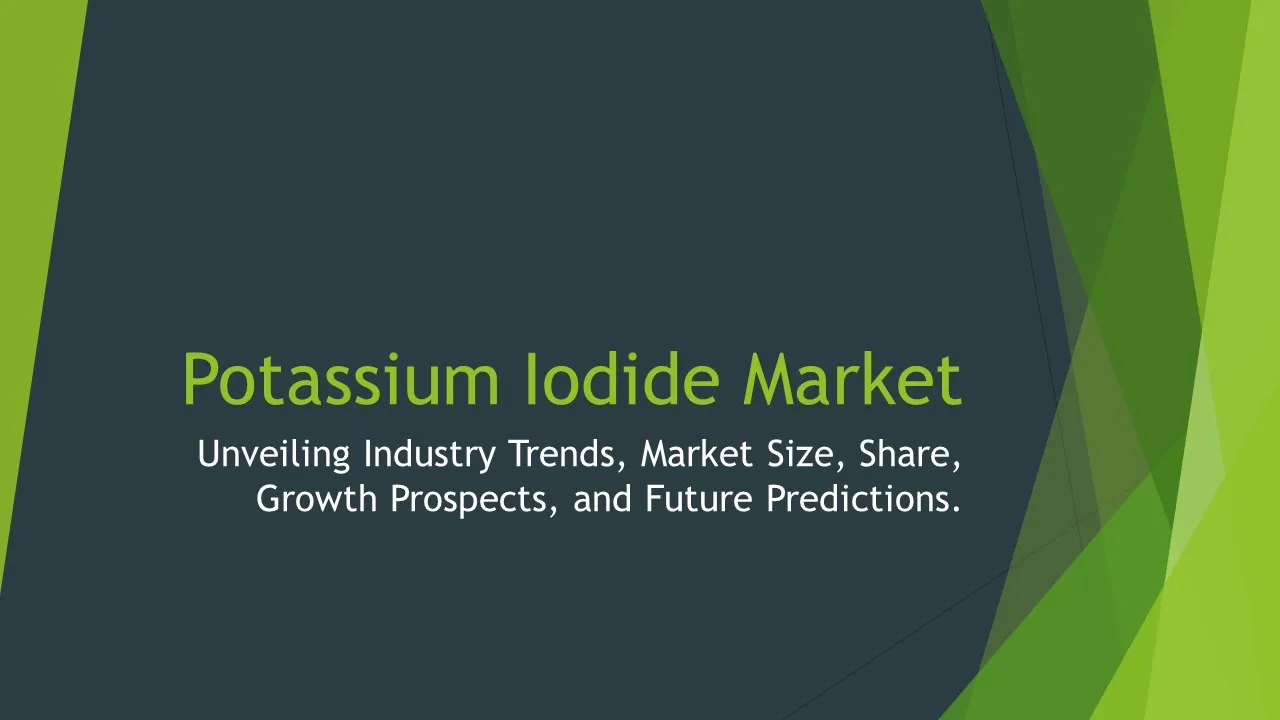Medium and Heavy Plate
Medium and Heavy Plate Market Segments - by Product Type (Carbon Steel, Alloy Steel, Stainless Steel, Aluminum, and Others), End-Use Industry (Construction, Automotive, Shipbuilding, Machinery, and Others), Distribution Channel (Direct Sales, Indirect Sales), Thickness (Below 20mm, 20-50mm, 50-100mm, Above 100mm), and Region (Asia Pacific, North America, Europe, Latin America, Middle East & Africa) - Global Industry Analysis, Growth, Share, Size, Trends, and Forecast 2025-2035
- Report Preview
- Table Of Content
- Segments
- Methodology
Medium and Heavy Plate Market Outlook
The global medium and heavy plate market is projected to reach approximately USD 250 billion by 2035, growing at a remarkable CAGR of around 4.5% during the forecast period. This growth is driven by several key factors, including the increasing demand for heavy machinery and construction materials due to rapid urbanization and industrialization. Additionally, the automotive and shipbuilding industries are expanding significantly, which further fuels the demand for heavy plates. The ongoing investments in infrastructure development, especially in emerging economies, along with the recovery of the manufacturing sector post-pandemic, are anticipated to augment the market growth. Moreover, the technological advancements in manufacturing processes and the development of high-strength, lightweight materials are also contributing to the market's positive outlook.
Growth Factor of the Market
One of the primary growth factors for the medium and heavy plate market is the rising infrastructure development projects worldwide. Governments are increasingly investing in transport, energy, and housing, which requires significant amounts of heavy plates for construction and manufacturing. Additionally, the expansion of the automotive industry, particularly in electric vehicles, necessitates the use of advanced plate materials for structural integrity and safety. The shipbuilding industry is also witnessing growth, with nations vying to enhance their marine capabilities, further driving demand. Furthermore, the shift towards sustainable and energy-efficient production practices pushes manufacturers to innovate and enhance their offerings. The rising adoption of automation and robotics in heavy plate manufacturing is improving efficiency and reducing costs, thereby attracting more investments in this sector. As a result, these factors collectively are set to boost the overall growth of the medium and heavy plate market.
Key Highlights of the Market
- The medium and heavy plate market is anticipated to grow at a CAGR of 4.5% from 2025 to 2035.
- Increased investments in infrastructure development globally are a key driver of market growth.
- Technological advancements in manufacturing processes are enhancing product quality and efficiency.
- The automotive and shipbuilding industries are significant contributors to the demand for heavy plates.
- Emerging economies are exhibiting rapid industrial growth, further propelling market expansion.
By Product Type
Carbon Steel :
Carbon steel remains one of the most widely utilized materials in the medium and heavy plate market due to its excellent tensile strength, versatility, and cost-effectiveness. Its properties make it suitable for various applications, particularly in the construction and manufacturing sectors. The production of carbon steel plates involves a straightforward process, which allows for high scalability and output. Moreover, with the continuous development of carbon steel grades, manufacturers are now able to offer specialized products tailored to specific industry needs, enhancing performance in demanding applications. The growth of infrastructure projects worldwide is further bolstering the demand for carbon steel plates, making it a key segment within the market.
Alloy Steel :
Alloy steel plates, which are made by combining iron with various elements to enhance specific properties, are increasingly in demand for applications requiring higher strength and durability. These plates exhibit improved mechanical properties and resistance to wear and corrosion when compared to carbon steel. Industries such as automotive and shipbuilding often require alloy steel for components that need to withstand high stress and harsh conditions. As manufacturers emphasize creating stronger, lighter products, the demand for alloy steel plates is expected to grow. Furthermore, advancements in alloy formulations are enabling better performance in extreme environments, making this segment a crucial part of the medium and heavy plate market.
Stainless Steel :
Stainless steel plates are recognized for their corrosion resistance and aesthetic appeal, making them a preferred choice in high-end applications. Industries such as food processing, chemical, and pharmaceuticals require stainless steel due to its hygienic properties and durability. The growth in these sectors is directly influencing the demand for stainless steel plates. Moreover, the trend towards sustainability and eco-friendly materials is propelling manufacturers to adopt stainless steel, as it is recyclable and contributes to reducing environmental impact. Innovations in stainless steel manufacturing technologies are also enhancing the quality and performance of these plates, solidifying their position in the medium and heavy plate market.
Aluminum :
Aluminum plates are gaining traction in the medium and heavy plate market due to their lightweight properties, corrosion resistance, and excellent strength-to-weight ratio. These characteristics make aluminum plates particularly attractive for industries such as aerospace, automotive, and construction, where reducing weight without compromising strength is essential. The shift towards electric vehicles is also boosting the demand for aluminum as manufacturers seek to improve vehicle efficiency. Furthermore, advancements in aluminum alloy technologies are expanding the application range of these plates, which is likely to drive their market growth in the coming years. The sustainability aspect of aluminum, being highly recyclable, further enhances its appeal across various industries.
Others :
The "Others" category in the product type segment encompasses various specialized materials, including titanium and high-performance alloys, which are utilized in niche applications across different industries. These materials are often employed in sectors such as aerospace, defense, and advanced manufacturing, where superior mechanical properties and resistance to extreme conditions are required. The demand for these specialized plates is driven by the need for lightweight and high-strength materials that can perform under challenging environments. As industries continue to innovate and develop advanced technologies, the demand for these unique materials is expected to rise, contributing positively to the overall medium and heavy plate market.
By Use Industry
Construction :
The construction industry is one of the largest consumers of medium and heavy plates, as these materials are essential for structural applications. Heavy plates are often used in building frameworks, bridges, and large-scale infrastructure projects. The ongoing global urbanization and infrastructure development initiatives are propelling the demand for these plates, as they provide the necessary strength and durability to withstand various loads and environmental conditions. As governments and organizations increase investments in public and private construction projects, the construction industry's need for medium and heavy plates is expected to remain robust, driving sustained growth in this segment.
Automotive :
The automotive industry is witnessing a transformative shift towards electric and hybrid vehicles, which are changing the dynamics of medium and heavy plate consumption. Traditional vehicles require robust materials for structural components, while electric vehicles demand lightweight materials to enhance energy efficiency. Consequently, the demand for heavy plates in this sector is evolving, with a growing emphasis on high-strength lightweight materials such as aluminum and advanced steel grades. The ongoing technological advancements and innovations in vehicle design are expected to bolster the growth of medium and heavy plates in the automotive sector, as manufacturers strive for improved performance and compliance with stringent regulations.
Shipbuilding :
The shipbuilding industry heavily relies on medium and heavy plates for constructing various vessels, including commercial ships, naval ships, and offshore platforms. The increasing global trade and demand for marine transportation are driving the need for new shipbuilding projects, directly impacting the heavy plate market. Additionally, advancements in naval technology and the trend towards larger, more efficient vessels require the construction of high-quality steel plates. The shipbuilding industry's growth, particularly in emerging economies, is anticipated to further stimulate the demand for medium and heavy plates in the coming years, making it a vital segment within the overall market.
Machinery :
The machinery industry also represents a significant segment for medium and heavy plates, as these materials are crucial for manufacturing various types of equipment and machinery components. Heavy plates are used in the production of industrial machines, construction equipment, and agricultural machinery, where durability and strength are paramount. The ongoing industrialization and the rise in manufacturing capabilities across several regions are expected to amplify the demand for heavy plates in this sector. Moreover, the increasing trend of automation and smart manufacturing is likely to drive the need for specialized heavy plates that can endure high operational demands, further propelling market growth.
Others :
The "Others" category encompasses a range of industries, including energy, aerospace, and defense, which utilize medium and heavy plates for specialized applications. In the energy sector, heavy plates are essential for constructing pipelines, storage tanks, and power plants, where material strength and reliability are critical. The aerospace and defense industries require high-performance materials to manufacture components that can withstand extreme conditions. As these industries continue to evolve and invest in advanced technologies, the demand for medium and heavy plates is expected to grow, contributing to the overall expansion of the market.
By Distribution Channel
Direct Sales :
Direct sales play a vital role in the medium and heavy plate market, as manufacturers often engage in direct transactions with large industrial clients. This method allows for tailored solutions and direct communication between the producer and the customer, facilitating better negotiation on pricing and delivery terms. Direct sales channels also enable manufacturers to establish long-term relationships with their clients, ensuring consistent orders and feedback that can drive product developments. As industries continue to seek reliable suppliers for their raw materials, the direct sales channel is expected to maintain a significant share in the distribution of medium and heavy plates.
Indirect Sales :
Indirect sales represent another crucial segment of the distribution channel for medium and heavy plates, involving intermediaries such as distributors, wholesalers, and retailers. This method provides broader market access to manufacturers and allows smaller buyers to procure heavy plates without directly engaging with the producers. Distributors often carry a diverse range of products, enabling customers to select from various options based on their requirements. As the market expands and the demand for medium and heavy plates increases, the indirect sales channel is poised to grow, offering flexibility and convenience for end-users.
By Thickness
Below 20mm :
Plates with a thickness of below 20mm are commonly used in applications requiring lighter materials, such as in manufacturing, construction, and automotive sectors. These thinner plates are ideal for producing components that do not require excessive strength but still need structural integrity. The versatility of below 20mm plates enables their use in various contexts, from lightweight structures to decorative elements. As industries seek to reduce weight and increase efficiency, the demand for these thinner plates is anticipated to grow, aligning with the overall trends in material usage across different sectors.
20-50mm :
Plates falling within the 20-50mm thickness range serve as a middle ground, providing a balance between weight and strength for various industrial applications. These plates are typically utilized in construction, machinery, and heavy equipment manufacturing, where moderate strength is required. The demand for 20-50mm plates is expected to remain robust, driven by ongoing infrastructure development projects and increasing industrial activities. Manufacturers focusing on producing high-quality medium and heavy plates within this thickness range are likely to gain a competitive advantage as they cater to diverse market needs.
50-100mm :
Medium and heavy plates with thicknesses ranging from 50-100mm are essential for applications requiring significant structural strength and durability, such as in heavy machinery, shipbuilding, and construction. These plates are often employed in high-stress environments, providing the necessary resilience to withstand heavy loads and harsh conditions. The growing trend towards large-scale infrastructure projects and heavy industrial applications is anticipated to drive demand for these thicker plates. As industries continue to expand and innovate, the need for robust materials in the 50-100mm thickness range will contribute to the market's growth.
Above 100mm :
Plates thicker than 100mm are primarily used in specialized applications that demand exceptional strength and durability, such as in the energy sector, particularly for oil and gas pipelines and offshore structures. These ultra-thick plates must meet stringent safety and performance standards, necessitating advanced manufacturing processes and quality control. The demand for above 100mm plates is influenced by increasing investments in energy infrastructure and large-scale industrial projects. As global energy needs expand, the market for ultra-thick heavy plates is expected to see substantial growth, driven by both technological advancements and regulatory requirements in various sectors.
By Region
The Asia Pacific region is projected to dominate the medium and heavy plate market, accounting for approximately 45% of the global share by 2035. This growth is attributed to rapid industrialization, urbanization, and significant investments in infrastructure development across countries like China and India. The construction, automotive, and shipbuilding industries in this region are thriving, further bolstering the demand for medium and heavy plates. Additionally, the growing trend of manufacturing hubs shifting towards Asia Pacific due to cost advantages and skilled labor is expected to enhance the market landscape in this region. With a robust CAGR of around 5%, Asia Pacific is set to lead the market throughout the forecast period.
North America and Europe are also significant players in the medium and heavy plate market, collectively accounting for about 35% of the total market share. In North America, the resurgence in manufacturing activities and the ongoing infrastructure projects are driving demand for heavy plates. Meanwhile, Europe's focus on sustainable materials and advanced manufacturing technologies is shaping the market landscape. Both regions are witnessing steady growth, with North America expected to grow at a CAGR of around 3.5% and Europe at approximately 4% during the same period. As the global market expands, these regions will continue to play a vital role in the evolution of the medium and heavy plate industry.
Opportunities
One of the most significant opportunities in the medium and heavy plate market lies in the growing demand for sustainable and environmentally friendly materials. As industries come under increasing pressure to reduce their carbon footprint and adopt green practices, there is a rising interest in innovative materials that offer both performance and sustainability. Manufacturers who invest in the development of eco-friendly heavy plates, such as those made from recycled materials or with lower emissions during production, will likely find themselves at a competitive advantage. This trend is not only beneficial for the environment but also aligns with the increasing regulatory focus on sustainability in many regions, thereby enhancing market prospects for green products.
Another opportunity arises from the ongoing advancements in technology and automation within the manufacturing sector. The adoption of Industry 4.0 principles, such as smart manufacturing and the Internet of Things (IoT), is transforming the medium and heavy plate production processes. These technologies enable manufacturers to optimize their operations, reduce waste, and enhance product quality. Companies that embrace these technological advancements can improve their efficiency, productivity, and overall competitiveness in the market. Therefore, investing in modern manufacturing technologies presents a significant opportunity for growth as the industry continues to evolve and adapt to changing market demands.
Threats
Despite the promising outlook for the medium and heavy plate market, several threats could hinder its growth. One of the most pressing challenges is the fluctuation of raw material prices, particularly steel, which is subject to global market dynamics and trade policies. Price volatility can significantly impact manufacturers’ profitability and production costs, leading to potential disruptions in supply chains. Additionally, competition from alternative materials, such as composites and other lightweight materials, poses a threat to the traditional heavy plate market. Manufacturers must continuously innovate and adapt to remain competitive, as shifting preferences towards more sustainable and efficient materials could divert demand away from conventional heavy plates.
Furthermore, regulatory challenges and compliance issues pose significant restraining factors for the medium and heavy plate market. As governments worldwide implement stricter regulations regarding environmental standards and safety measures, manufacturers are often required to invest in compliance and technological upgrades. These changes can place additional financial burdens on companies, particularly smaller manufacturers, potentially affecting their ability to compete effectively. Consequently, navigating the complex regulatory landscape and ensuring compliance with evolving standards is essential for sustained growth in the medium and heavy plate market.
Competitor Outlook
- ArcelorMittal
- Thyssenkrupp AG
- Nippon Steel Corporation
- Baosteel Group
- POSCO
- United States Steel Corporation
- Tata Steel Limited
- JFE Steel Corporation
- Hebei Iron and Steel Group
- Steel Authority of India Limited (SAIL)
- SSAB AB
- Sumitomo Metal Industries
- Fangda Special Steel Technology Co., Ltd.
- Valin Steel Group Co., Ltd.
- Severstal
The competitive landscape of the medium and heavy plate market is characterized by a mix of global leaders and regional players, each vying for a share of this growing market. Major manufacturers, such as ArcelorMittal and Thyssenkrupp AG, dominate the market with their extensive product portfolios, strong distribution networks, and innovative capabilities. These companies are focusing on expanding their operations through strategic partnerships, mergers, and acquisitions, as well as investing in technology to enhance production efficiency and sustainability. Additionally, many competitors are actively engaged in research and development to create advanced materials that meet the evolving demands of end-users across various industries.
United States Steel Corporation and Tata Steel Limited are also notable players in this market, leveraging their technological expertise and economies of scale to drive growth. United States Steel Corporation has been focusing on enhancing its manufacturing processes and product offerings to cater to diverse customer requirements, while Tata Steel has been investing significantly in sustainability initiatives, including the development of eco-friendly steel products. These strategic moves are essential for maintaining competitiveness in an industry characterized by rapid technological advancements and increasing customer expectations.
Emerging competitors, particularly from the Asia Pacific region, are gaining traction by adopting aggressive pricing strategies and enhancing their production capabilities. Companies like Baosteel Group and POSCO are leveraging their strong domestic markets to expand their presence globally, competing effectively with established players. Moreover, the trend towards localization of supply chains and increased investments in domestic manufacturing capabilities are opening up new opportunities for regional competitors to gain market share. As the industry continues to evolve, these companies will play an increasingly important role in shaping the competitive dynamics of the medium and heavy plate market.
1 Appendix
- 1.1 List of Tables
- 1.2 List of Figures
2 Introduction
- 2.1 Market Definition
- 2.2 Scope of the Report
- 2.3 Study Assumptions
- 2.4 Base Currency & Forecast Periods
3 Market Dynamics
- 3.1 Market Growth Factors
- 3.2 Economic & Global Events
- 3.3 Innovation Trends
- 3.4 Supply Chain Analysis
4 Consumer Behavior
- 4.1 Market Trends
- 4.2 Pricing Analysis
- 4.3 Buyer Insights
5 Key Player Profiles
- 5.1 POSCO
- 5.1.1 Business Overview
- 5.1.2 Products & Services
- 5.1.3 Financials
- 5.1.4 Recent Developments
- 5.1.5 SWOT Analysis
- 5.2 SSAB AB
- 5.2.1 Business Overview
- 5.2.2 Products & Services
- 5.2.3 Financials
- 5.2.4 Recent Developments
- 5.2.5 SWOT Analysis
- 5.3 Severstal
- 5.3.1 Business Overview
- 5.3.2 Products & Services
- 5.3.3 Financials
- 5.3.4 Recent Developments
- 5.3.5 SWOT Analysis
- 5.4 ArcelorMittal
- 5.4.1 Business Overview
- 5.4.2 Products & Services
- 5.4.3 Financials
- 5.4.4 Recent Developments
- 5.4.5 SWOT Analysis
- 5.5 Baosteel Group
- 5.5.1 Business Overview
- 5.5.2 Products & Services
- 5.5.3 Financials
- 5.5.4 Recent Developments
- 5.5.5 SWOT Analysis
- 5.6 Thyssenkrupp AG
- 5.6.1 Business Overview
- 5.6.2 Products & Services
- 5.6.3 Financials
- 5.6.4 Recent Developments
- 5.6.5 SWOT Analysis
- 5.7 Tata Steel Limited
- 5.7.1 Business Overview
- 5.7.2 Products & Services
- 5.7.3 Financials
- 5.7.4 Recent Developments
- 5.7.5 SWOT Analysis
- 5.8 JFE Steel Corporation
- 5.8.1 Business Overview
- 5.8.2 Products & Services
- 5.8.3 Financials
- 5.8.4 Recent Developments
- 5.8.5 SWOT Analysis
- 5.9 Nippon Steel Corporation
- 5.9.1 Business Overview
- 5.9.2 Products & Services
- 5.9.3 Financials
- 5.9.4 Recent Developments
- 5.9.5 SWOT Analysis
- 5.10 Sumitomo Metal Industries
- 5.10.1 Business Overview
- 5.10.2 Products & Services
- 5.10.3 Financials
- 5.10.4 Recent Developments
- 5.10.5 SWOT Analysis
- 5.11 Hebei Iron and Steel Group
- 5.11.1 Business Overview
- 5.11.2 Products & Services
- 5.11.3 Financials
- 5.11.4 Recent Developments
- 5.11.5 SWOT Analysis
- 5.12 Valin Steel Group Co., Ltd.
- 5.12.1 Business Overview
- 5.12.2 Products & Services
- 5.12.3 Financials
- 5.12.4 Recent Developments
- 5.12.5 SWOT Analysis
- 5.13 United States Steel Corporation
- 5.13.1 Business Overview
- 5.13.2 Products & Services
- 5.13.3 Financials
- 5.13.4 Recent Developments
- 5.13.5 SWOT Analysis
- 5.14 Steel Authority of India Limited (SAIL)
- 5.14.1 Business Overview
- 5.14.2 Products & Services
- 5.14.3 Financials
- 5.14.4 Recent Developments
- 5.14.5 SWOT Analysis
- 5.15 Fangda Special Steel Technology Co., Ltd.
- 5.15.1 Business Overview
- 5.15.2 Products & Services
- 5.15.3 Financials
- 5.15.4 Recent Developments
- 5.15.5 SWOT Analysis
- 5.1 POSCO
6 Market Segmentation
- 6.1 Medium and Heavy Plate Market, By Thickness
- 6.1.1 Below 20mm
- 6.1.2 20-50mm
- 6.1.3 50-100mm
- 6.1.4 Above 100mm
- 6.2 Medium and Heavy Plate Market, By Product Type
- 6.2.1 Carbon Steel
- 6.2.2 Alloy Steel
- 6.2.3 Stainless Steel
- 6.2.4 Aluminum
- 6.2.5 Others
- 6.3 Medium and Heavy Plate Market, By Use Industry
- 6.3.1 Construction
- 6.3.2 Automotive
- 6.3.3 Shipbuilding
- 6.3.4 Machinery
- 6.3.5 Others
- 6.4 Medium and Heavy Plate Market, By Distribution Channel
- 6.4.1 Direct Sales
- 6.4.2 Indirect Sales
- 6.1 Medium and Heavy Plate Market, By Thickness
7 Competitive Analysis
- 7.1 Key Player Comparison
- 7.2 Market Share Analysis
- 7.3 Investment Trends
- 7.4 SWOT Analysis
8 Research Methodology
- 8.1 Analysis Design
- 8.2 Research Phases
- 8.3 Study Timeline
9 Future Market Outlook
- 9.1 Growth Forecast
- 9.2 Market Evolution
10 Geographical Overview
- 10.1 Europe - Market Analysis
- 10.1.1 By Country
- 10.1.1.1 UK
- 10.1.1.2 France
- 10.1.1.3 Germany
- 10.1.1.4 Spain
- 10.1.1.5 Italy
- 10.1.1 By Country
- 10.2 Asia Pacific - Market Analysis
- 10.2.1 By Country
- 10.2.1.1 India
- 10.2.1.2 China
- 10.2.1.3 Japan
- 10.2.1.4 South Korea
- 10.2.1 By Country
- 10.3 Latin America - Market Analysis
- 10.3.1 By Country
- 10.3.1.1 Brazil
- 10.3.1.2 Argentina
- 10.3.1.3 Mexico
- 10.3.1 By Country
- 10.4 North America - Market Analysis
- 10.4.1 By Country
- 10.4.1.1 USA
- 10.4.1.2 Canada
- 10.4.1 By Country
- 10.5 Middle East & Africa - Market Analysis
- 10.5.1 By Country
- 10.5.1.1 Middle East
- 10.5.1.2 Africa
- 10.5.1 By Country
- 10.6 Medium and Heavy Plate Market by Region
- 10.1 Europe - Market Analysis
11 Global Economic Factors
- 11.1 Inflation Impact
- 11.2 Trade Policies
12 Technology & Innovation
- 12.1 Emerging Technologies
- 12.2 AI & Digital Trends
- 12.3 Patent Research
13 Investment & Market Growth
- 13.1 Funding Trends
- 13.2 Future Market Projections
14 Market Overview & Key Insights
- 14.1 Executive Summary
- 14.2 Key Trends
- 14.3 Market Challenges
- 14.4 Regulatory Landscape
Segments Analyzed in the Report
The global Medium and Heavy Plate market is categorized based on
By Product Type
- Carbon Steel
- Alloy Steel
- Stainless Steel
- Aluminum
- Others
By Use Industry
- Construction
- Automotive
- Shipbuilding
- Machinery
- Others
By Distribution Channel
- Direct Sales
- Indirect Sales
By Thickness
- Below 20mm
- 20-50mm
- 50-100mm
- Above 100mm
By Region
- Asia Pacific
- North America
- Europe
- Latin America
- Middle East & Africa
Key Players
- ArcelorMittal
- Thyssenkrupp AG
- Nippon Steel Corporation
- Baosteel Group
- POSCO
- United States Steel Corporation
- Tata Steel Limited
- JFE Steel Corporation
- Hebei Iron and Steel Group
- Steel Authority of India Limited (SAIL)
- SSAB AB
- Sumitomo Metal Industries
- Fangda Special Steel Technology Co., Ltd.
- Valin Steel Group Co., Ltd.
- Severstal
- Publish Date : Jan 20 ,2025
- Report ID : CH-5812
- No. Of Pages : 100
- Format : |
- Ratings : 4.5 (110 Reviews)









